#unfortunately he has been exceptionally beautiful this comeback
Explore tagged Tumblr posts
Text
Top 20 Most Underrated K-Pop Songs of the Decade (2010-2019) PART 1
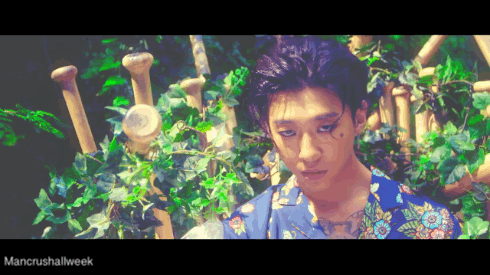
The 2010s has come and gone before we knew it.
Continuing with the K-Pop Timeout Tradition (see 2018 Ver) of listing the Top 10 Most Underrated K-Pop Songs because all the other sites are just bothered with the Top 10 that pretty much everyone will have heard of/have fan wars over, below we have created a list of the Top 20 Most Underrated K-Pop Songs of the Decade because 10 spots is not enough to cover the amount of talent slept on.
For these reasons, we will list 10 of them here in PART 1 and an additional 10 in PART 2. This is in alphabetic order NOT in the order of awesomeness because all of them are awesome. Also, all MVs are linked in the song titles because Tumblr won’t let me share that many videos in one post.
100% “U Beauty” (2014)

TOP Media has really failed to make their groups successful since TEEN TOP (and have not really promoted TEEN TOP these days either) and 100% was the first group to fall victim to TOP Media’s poor promotions. Debuting in 2012, the group had so much potential and talent. Rockhyun is arguably one of the best K-Pop main vocals of his generation (which global superstar Rain concurs as a coach on KBS’ “The Unit”) but most K-Pop fans won’t even know. Out of their repertoire, we found “U Beauty” to be worthy of being in the Top 20 most underrated tracks of the decade because of how catchy and wholesome the song is - boy groups often go for either a very cute or very powerful sound and this was a perfect balance of the two. The boys are able to show their cool and manly side through the powerful choreography and the soothing bridge while the rest of the song is cheerful and sweet. It blows our mind that these boys did not receive more attention in 2014 following such a great track. The boys are still an active boy band so go support their latest releases and check out this underrated gem called “U Beauty”!
A-JAX “INSANE” (2013)

A promising boy band which debuted during DSP Media’s more problematic years (essentially this whole decade until 2016/17), A-JAX never got the promotions they deserved. “INSANE” could have been the right direction for the group to pursue (except DSP gave them cute songs afterwards and later no songs at all). Perhaps because this song was slept on at the time of promotions (the album only sold around 2000 copies) that DSP did not try the sound again. However, it is powerful, slightly dark, yet poppy and fun with a good amount of EDM thrown in. We have had lots of quirky sounding girl groups like f(x), Orange Caramel, Red Velvet and Oh My Girl but not many quirky sounding boy bands since SHINee. “INSANE” was a unique song that could have paved the way for A-JAX to have gone down such a path. While the group has officially disbanded this year, “INSANE” is without a doubt one of the top underrated bops of the decade that you should check out!
B.A.P “WAKE ME UP” (2017)
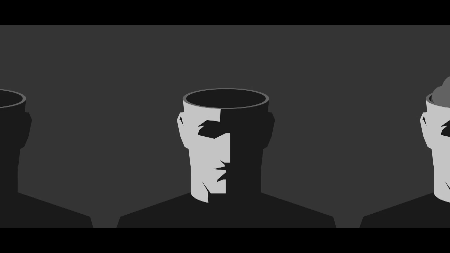
B.A.P had a great start during their early days and were essentially EXO’s rivals in the 2012-13s and brought the powerful self-produced boy band sound before BTS’ debut. However, likely due to a combination of TS Entertainment being shit and them being shittier after the members sued them during 2014-15, B.A.P never reached the heights of their early 2010s popularity again after returning in 2016 and have officially disbanded in 2019. While B.A.P dropped many underrated bops in their final years, we found “WAKE ME UP” to be the one making our Top 20. Not only was this song wonderful to listen to with the haunting repeats of “WAKE ME UP” in the intro and chorus, but it also has a brilliant message as one of the first K-Pop MVs to clearly illustrate different types of mental illness. Especially since the lyrics also spoke to some of the members, especially leader Bang Yongguk’s own mental health struggles, it was frustrating seeing such a good and heartfelt song receive so little attention in South Korea. If you love meaningful K-Pop tracks, you would love “WAKE ME UP”!
C-Clown “Shaking Heart” (2013)

C-Clown was one of the many amazing new groups in 2012 and had a clear sound and direction of ballad-pop bops. “Shaking Heart” was the last song they made in that style before their company made them go for the more generic mainstream hip-hop heavy sound and it definitely one of the best songs of the decade that was heavily slept on. It showcased the vast talents of the group - Kangjun and Ray’s amazing vocal colour and range (and lowkey still most visually powerful vocal line from a small label), Rome and TK’s contrasting rap styles, Siwoo’s consistency and Maru’s potential in becoming a golden maknae. The group has unfortunately disbanded in 2015, only 3 years after their phenomenal start. While most of the members appear to be doing quite well, with Rome (now going by his birth name Christian Yu) having founded DPR and being a famous K-Pop MV director, Kangjun having a solid modelling career and Maru re-debuting as the main vocal for RnB trio TREI, the group itself could have done so much more if more people took notice of what a bop “Shaking Heart” is and gave them the opportunity to do more tracks of that style. Hence, if you enjoy boy band tracks that combine more ballad styles with pop, this is the song for you!
Dalmatian/DMTN “E.R.” (2012)
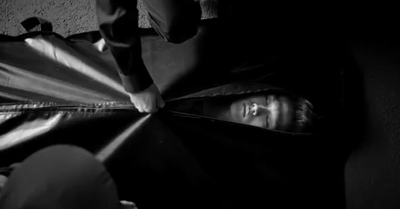
Dalmatian, later styled DMTN, was famous K-Pop producer MC Mong’s boy band that was gaining positive attention until member Daniel’s marijuana scandal. Member Simon often still does impromptu fan meets when he travels for work (he is now a coach and producer for idol groups in Japan) but the group has been inactive following 2013. While DMTN may now be a group of the past, their music was without a doubt amazing, with “E.R.” being a perfect example of the epitome early 2010s K-Pop sound (those who heard the DMTN “E.R”/B2ST “Fiction” mashup back then knows what’s up). The song had an emotional chorus filled with amazing ad-libs and beautiful piano instrumentals, a subtle yet sexy choreography and dramatic MV. If you love the early 2010s K-Pop sound, you would love this underrated bop!
GLAM “I Like That” (2013)
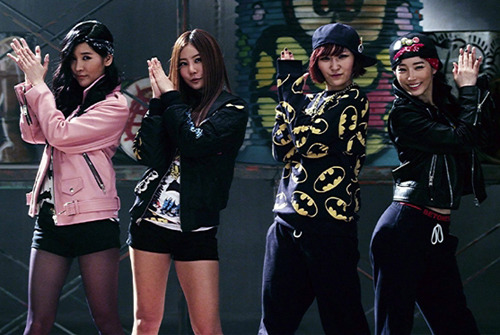
Many new K-Pop fans either don’t know them or only know them as the reason Big Hit Entertainment has not been recruiting female trainees for many years now (because one member went off to blackmail world star Lee Byunghun - you can learn all about the drama here). However, GLAM was actually an extremely promising girl group and the first idol group fully produced by Bang PD under Big Hit. Like their now world-famous brother group BTS, GLAM was a group with great vocals and rap, with no problem going hard in choreography and making woke statements (their debut song includes lyrics about being down to kiss boys or girls). “I Like That” was a perfect example of their style and abilities. While the song was just a remake of 1990s K-Pop track "Why Do You" by Chuli and Miae, it was done so well it was essentially GLAM’s own song. It is fun, it is catchy and just a strong and confident girl group bop that existed early in the decade when most girl groups besides 2NE1 and 4Minute did not go hard but cute or sexy. If you love powerful girl group tracks, you would love “I Like That”!
HISTORY “DREAMER” (2013)

The first boy band ever debuting under LOEN Entertainment (now Kakao M), the 5-member group of all visuals had many amazing tracks usually in the vein of dark and sexy concepts. The members were also active in song production and choreography and honestly had everything one could ask for to create a successful group. However, South Korea and overseas K-Pop fans both did not seem to have noticed the existence of such a talented and consistently awesome group and they disbanded in 2017. “DREAMER”, their debut track, is arguably one of the best songs of the decade because of the stage musical style of the song - the piano instrumentals in the verses and the marching band inclusion in the buildup to the chorus, with the crazy smooth footwork and wonderful harmonisation of the boys. There is no other K-Pop boy group song like this. If you are a fan of musicals, this is the song for you!
Ladies’ Code “Galaxy” (2016)
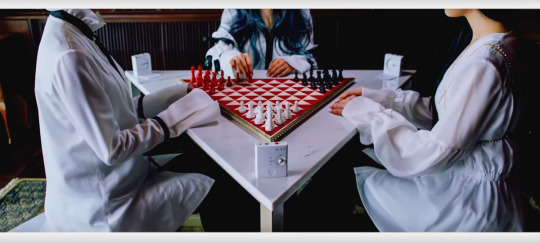
Ladies’ Code had a strong debut, being one of the top rookies in 2013 along with current superstars BTS. While their developing career took a huge blow after the car accident which claimed the lives of two members, EunB and Rise, the remaining girls Ashley, Sojung and Zuny powered on to continue creating amazing music. It is painful to see how their excellence is still ignored by the K-Pop fan base at large. Even Billboard listed “Galaxy” as the #19 best K-Pop track of the decade and very deservingly so. “Galaxy” was their first return as a 3-piece and see the girls take a darker and more mature sound following their earlier fun and quirky retro bops. This transition was done well, as more retro sound choices like jazz instrumentals and 80s chime synths were still used in this comeback as a bridge between the sounds of the two Ladies’ Code eras. The song also complements main vocal Sojung’s exceptionally raspy and low voice very well. These girls are still active and deserve so much more. If you enjoy the darker experimental tracks of f(x), Red Velvet and LOONA, “Galaxy” would be your jam!
MYNAME “Baby I’m Sorry” (2013)
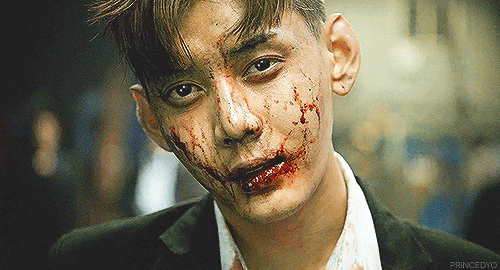
Debuting in 2011 under legendary Korean RnB duo Fly to the Sky’s Hwanhee’s label, MYNAME was the boy band you knew could sing. And damn they could sing so well. Even the rappers of MYNAME sing typical K-Pop lead vocal quality. For this reason, it made a lot of sense for MYNAME to go for a more ballad-pop sound and flourish in such a musical environment. While they did produce a lot of great songs of that sound, the lack of attention from the Korean public pushed them to go for a more generic hip-hop based boy band sound in 2015. “Baby I’m Sorry” was an example of the greatness of their earlier sound which was just brilliant Korean action drama OST material. The MV was also one of the rare story MVs that make it seem like you are watching a movie (plus the boys acted well). While MYNAME is still active, they now pretty much exclusively promote in Japan, where they are actually appreciated and chart high. In Korea, the members gave their last shot as being idols in KBS’ poorly received survival program “The Unit” and now just act sometimes or model. If you love dramatic ballad-based boy band tracks, you should check out MYNAME’s “Baby I’m Sorry”!
Nine Muses “Wild” (2013)
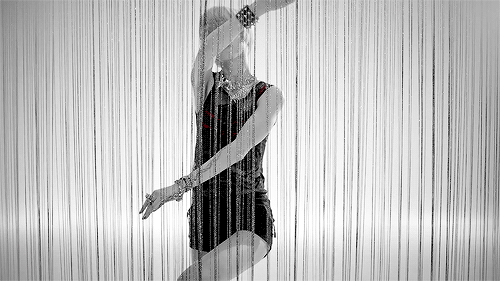
Once known as the real generals of the Korean military due to their huge fan base among conscripted soldiers, Nine Muses was THE sexy girl group of the decade who somehow always existed between real fame and nugudom during their active years from 2010-2019. Like they have dedicated fans but they never win music show #1s. And the song that should have really put them on the map for all Koreans and K-Pop fans is their 2013 comeback “Wild”. This was just pop perfection - it is catchy, showcases each of the 9 members’ unique vocal colours and performance style, and had some of the sharpest and most in-sync girl group choreography execution of all time. It was also one in a long line of Nine Muse songs that sound like high fashion runaway music and arguably one of the peaks due to the specific line-up of members at the time. Check out “Wild”, if you would like to listen to one of the best K-Pop girl group tracks of the decade!
The other 10 Top 20 Underrated K-Pop Tracks of the Decade are listed in PART 2.
#kpop#k-pop#kpop underrated#k-pop underrated#kpop 2010s#k-pop 2010s#kpop 2019#k-pop 2019#100%#a-jax#b.a.p#c-clown#dalmatian#glam#history#ladies' code#myname#nine muses#100% u beauty#a-jax insane#b.a.p wake me up#c-clown shaking heart#dalmatian e.r.#glam i like that#history dreamer#ladies' code galaxy#myname baby i'm sorry#nine muses wild
23 notes
·
View notes
Text
Top 10 Songs of 2017...so far
Hello, Mansaebebes! 2017 has been an amazing year so far musically, with many new and diverse releases from both rookie and veteran artists. To celebrate what is shaping out to be an amazing year, Mansae Entertainment is proud to share a list of the top K-Pop 10 songs of 2017 so far. Before getting to the list, I would like to stress that this list is only for songs that were released between January and June of 2017. This is also a personal review and, in no way, reflects the opinions of Mansae Entertainment as a whole, but the sole opinions of a single author and his musical tastes.
10. “Laputa (feat. Crush)” - DPR Live

If you do not listen to DPR Live while you read this, I need you to expose yourself to this talented musician. DPR Live has a type of flow and delivery that, while powerful and impactful, has a form of melancholic calm to it, especially in the work on his debut album “Coming To You Live.” I will admit that I am always reluctant to start listening to Korean hip-hop artists because they often try too hard and appropriate culture to no end, but DPR Live’s music and lyricism drew me in almost instantly. Namely his two tracks, “Laputa” and “Right Here Right Now,” both featuring some of Korean hip-hop's biggest names. “Laputa” appears to get its name from the mythical flying island in “Gulliver’s Travels.” The track’s main hook includes DPR Live comparing his lover's body to a perfectly circular island to explain how perfect her body is, but he continues to explain how here beauty is astronomical, as astronomy is a key point of interest for the island's inhabitants. When Crush delivers his part in the latter half of the songs, his voice truly gives the song an ethereal sense of mystery and dynamics.
9. “Complex” - Zion.T
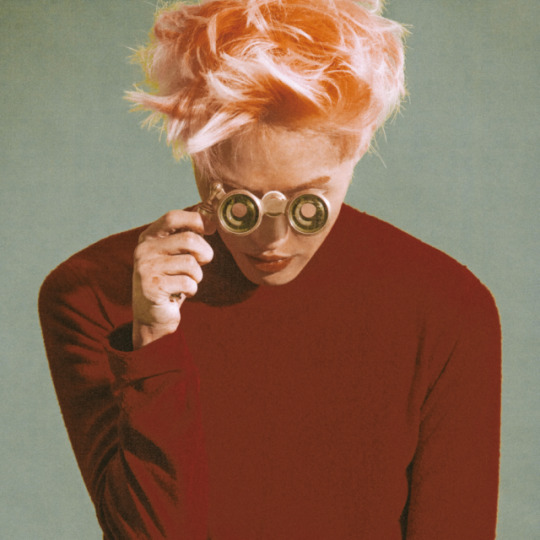
I feel like no one really knew what would happen after Zion.T signed with The Black Label, and I feel like everyone approached the “OO” album with an equal sense of hope and apprehension. However, Zion.T showed us that there was definitely nothing to worry about. Not only did he infuse his signature Zion.T “flavor” into all the songs, but he also managed to collaborate with one of K-Pop’s biggest stars, seen when G-Dragon featured on “Complex.” Easily the most anticipated song on the album, "Complex” brought together two of the best lyricists in K-Pop and allowed them to have a back and forth over what it means to have fame and be a musician. Zion.T’s voice drips with melancholy as he croons about his own shortcomings and throws shade at what he views as idol fame before G-Dragon brags back with a rap about the success he has enjoyed while being an idol. Twinkling piano keys, solid snaps, and light drum beats give this amazing piece of lyrical genius its own distinct sound, and the two “Complex” artists delivery give it its life.
8. I’ll Be Yours-Girl’s Day

I have never been a fan of Girl’s Day. I’d just never taken the time to listen to their music even though I had ample time during their year-long absence. I am admittedly still not a huge fan, but that doesn’t stop “I’ll be Yours” from being a bop. If I could use one word to describe this song it would “VOCALS.” From start to finish they hit us with powerful vocals that, backed by the amazing brassy production, allows them to reach amazing heights. The sassy delivery, the amazing big band feel, and the incredibly grown woman vibes that need to continue as a trend for the rest of 2017, all joined to make this track one of the best bangers of the first half of the year. I know that many felt let down by this comeback, especially after waiting for such a long time, but for me, the track was just what Girl’s Day needed to further solidify themselves as a force in the K-pop industry.
7. Archangels of the Sephiroth(세피로트의 나무)-Stellar
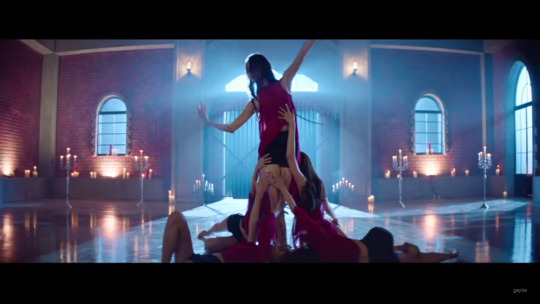
So, are y’all really still sleeping on Stellar? Are y’all serious? Let me get off my soapbox and talk about this song. “Sting” was one of the best songs of 2016, in my opinion, and “Cry” was also exceptionally good, so I was extremely excited for Stellar to make a comeback, especially after hearing that they raised over 1000% of their Makestar goal. This comeback introduced the new member, Soyoung, in the best way possible. Not only was she given her own spotlight in the MV, but she also was given significant lines, in what was sonically a departure from all of Stellar’s previous works, and K-pop songs in general for that matter. With a name like “Archangels Of The Sephiroth,” I was expecting something different, and Stellar delivered the difference in the best way possible. With an instrumental, that sounds distinctly Middle Eastern, and a jarring almost shouted chorus, the song is a definite earworm. There was no vocal acrobatics, in the song and that was probably for the best, the song gets its distinction from it’s instrumental, and again, I applaud Stellar for taking a different route than most K-pop artists and doing it to great effect. Now, if you guys would stop viewing Stellar as only a “sex” group, and acknowledge their quality music and the countless comebacks that are less suggestive, then we could be cool.
6. Akmu-Reality (리얼리티)
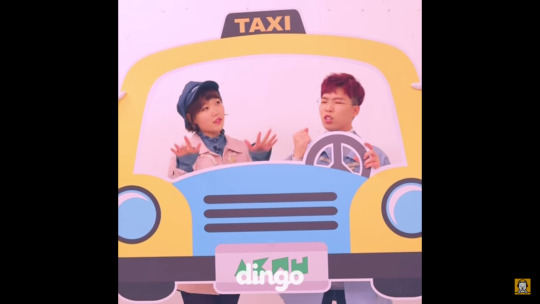
I loves me some AKMU, I really do, and when I found out that they were getting released from the YG dungeon again after less than a year's time since “Spring,” I was extremely excited. AKMU is one of the groups where, no matter how long they have between releases, they will always be fantastic. Their 2nd full-album “Winter” introduced a plethora of great tracks, but none more so than “Reality.” As a self-proclaimed Veteran K-pop stan, the idea of growing older scares me, especially because I turned 20 fairly recently, but leave it to AKMU to write an upbeat and almost childish song on the subject. With witty lyrics and a signature AKMU delivery, this song was a great way to start the year.
5. Don’t Wanna Cry(울고 싶지 않아)-Seventeen
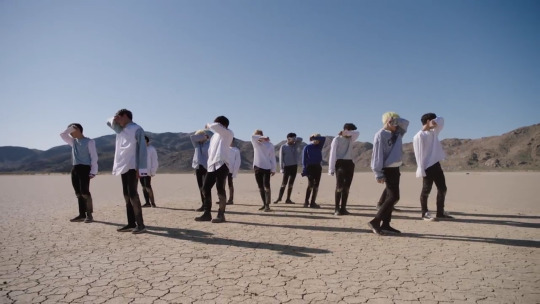
Seventeen is my ultimate bias boy group and being so I have come to expect a certain level of off-kilter energy and funk from their title tracks. With “Don’t Wanna Cry” they showed a different side of themselves not yet seen on a lead single. They showed vulnerability. While I am honestly getting tired of EDM songs in K-pop, Seventeen used the sound well and did not let the production overpower their emotions and the song's meaning. This title track is unique because it features the entire rap-line singing and two of the most underrated rappers in the group (Mingyu and Wonwoo) carry the song to its climax. This song is a great addition to Seventeen’s discography and the year in music as a whole, but please……no more EDM, Y'all.
4. 1+1=0(Feat. Dean)-Suran

Another song about the difficulties of life, especially as a youth. “1+1=0” is the title track off of Suran’s debut solo mini-album and she proved herself a solo musical force. She easily has one of the most unique voices in K-pop, and when paired with Dean, a veteran of collaborating with female artists (see last years “Shut up and Groove” and “And July” by Heize), it was no surprise to me when this song turned out to be an amazing track. A play on words “일” or “il” represents the number one but also means work. The pun being that work and work doesn’t equal anything, and as a rising college junior with a lot on my plate, this song truly spoke to me. Backed by playful guitar strums, this song urges you to not be afraid of relaxing when burdened by work and “just chill.”il” represents the number one but also means work. The pun being that work and work doesn’t equal anything, and as a rising college junior with a lot on my plate, this song truly spoke to me. Backed by playful guitar strums, this song urges you to not be afraid of relaxing when burdened by work and “just chill.”
3. Baby Don’t Like It-NCT 127
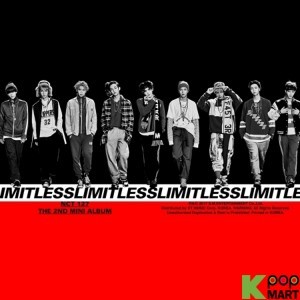
I was not a fan of NCT 127’s debut. "Firetruck" was a HUGE disappointment to me, and the subsequent mini-album was met with similar sentiments. With all that in mind, I was not expecting their sophomore mini-album to be full of certified hits. I have no shame when saying that, in my opinion, every song on this album could be singles. “Baby Don’t Like It” deserved so much more play than it was given. Y’all, Mark and Taeyong did that, and they didn’t just do it, they did it dirty. When Mark delivered the line “I like it when we get closer, when it gets risky,” it was a wrap for me. Taeyong and Mark are honestly some of the best young idol rappers in the industry, and no one was expecting SM to be able to pull off Hip-Hop concepts to the effect that NCT has done. This smooth piece of hip-hop and R&B gold proves that SM can tackle any genre and it is still a staple in my playlists to this day.
2. Signal-Twice

Twice has truly earned the title of “Nation’s Girl Group.” They constantly deliver bop after bop after bop and “Signal” is no different. I’m not gonna lie, I was a little worried when I found out that Twice was not working with Black Eyed Pilseung for this title track but instead with Mr JYP himself. Granted Park Jinyoung is an amazing producer, but Twice has always seemed to work well without his help, and the JYP Entertainment releases that were not produced by him so far have been consistently good. He shut me up real quick with this Grade A smash. Twice is a girl group that benefits of the quirky factor, and that factor combined with the bounce clap-driven composition and the easy sing-along chorus was enough to launch this song up to the same level of unexpected greatness of Twice’s previous title tracks.
1. Night Rather Than Day(낮보다는 밤)-EXID

EXID has always been a group with quality music. I’d been a listener of their music even before Hani’s viral fancam, but I didn’t consider myself a fan until LI.E. After that song, I was excited about the group's next release, and even after Solji’s unfortunate hiatus, they managed to cement my status as a Leggo. I am a huge fan of chill pop songs and I’m a huge fan of retro-esque pop songs and “Night Rather Than Day” delivers on both of these aspects. After EXID's skyrocket to popularity with “Up and Down,” I’d come to expect a certain bombastic sound from them, but they seemed to do a complete 180 with this release. The only word I can use to describe my feelings after hearing the song is ‘warm.’ This jam puts me in a good mood every time I hear it and I want to dance through life when the chorus hits. This song truly deserves the number one spot on my list for being a departure from not only earlier EXID songs, but from modern K-pop trends as a whole. Shinsadong Tiger, EXID’s long-time collaborator, really did his thing when he helped to compose this amazing title track. I cannot wait until Solji fully recovers so I can watch the girls do, what has become my favorite EXID song as a whole group.
As I said before, the first half of 2017 has been an amazing year so far with quality content dropping left and right. The rest of my associates at Mansae and I, cannot wait to see what the rest of the year has in store.
-Twonder
#EXID#Stellar#Seventeen#DPR Live#Twice#Suran#Dean#NCT 127#AKMU#Girl's Day#Crush#Jay Park#Loco#Gdragon#kpop#signal#night rather than day#1+1=0#Archangels of the sephiroth#Laputa#I'll be yours#baby don't like it#Don't Wanna Cry#Reality#complex
9 notes
·
View notes
Text
Drama Review - “Fight My Way”
(Official Trailer 2)
Lee Najeong (Director) – Fight My Way
Reviewed on September 3, 2017

I highly recommend this drama. While it is not perfect at all and does contain—in my argument—certain, significant flaws, I find that this drama is still one of the best I have ever seen. Furthermore, as I will focus on in this review, this drama’s main strength lies in how it is incredibly versatile and this reason is, perhaps, why the drama was incredibly popular—both in South Korea and even elsewhere. After all, Fight My Way arguably flourishes in the two main aspects of dramas: it appeals to a wide audience; and, it contains solid theatrical features in order to maintain said wide audience.
Personal Message: Edit: As one can tell, I intended to post this review far sooner. I am incredibly busy with university, so I hope for readers to be understanding with the lack of content lately. It has been two weeks since the prior post, but I will sincerely attempt to still be active with this blog despite how hectic my university schedule is. In fact, just finishing this review was incredibly fun and rewarding and it is moments such as these that I regret not writing every day.
Apologies for the lack of content. University has indeed started as of this sentence and thus, I will be busy with upcoming classes. I expect this semester to be by far the busiest, but I will do my best to post around six or so reviews per month. I also will still try to catch up on other reviews from the summer that I have not reviewed: GFRIEND’s “Love Whisper” and Blackpink’s “As If It’s Your Last.” But, considering there are recent comebacks that might be more relevant to review such as PRISTIN’s “We Like,” those mentioned reviews might have to unfortunately be skipped.
Regarding this review, this will be a “bonus” review: a review that still attempts to bring critical, thoughtful discussion but one that will ultimately be hindered by lack of experience. Therefore, readers should feel free to openly challenge this review’s take to the drama or at least interpret the review lightly. After all, while I do enjoy watching dramas from time to time, I am exceptionally inexperienced with the theatrical aspects that are involved. Lastly, for the remaining clarification needed, while it should be noted that there are many to praise and credit for the production of a drama, in this review I will explicitly credit and oftentimes refer to Lee Najeong—the director of Fight My Way. I have decided on doing this as, if I am correct, the directors are the ones in charge of directly guiding how each scene appears in the drama—this being akin to, say, an author of a novel. As a result, she will be who I explicitly credit but of course, in the overall scheme of creating a drama, I hope to remind readers that all staff members deserve credit.
With all of that, let us head into the review for Fight My Way.
_______________________________________________________
Recommendation: I highly recommend this drama. While it is not perfect at all and does contain—in my argument—certain, significant flaws, I find that this drama is still one of the best I have ever seen. Furthermore, as I will focus on in this review, this drama’s main strength lies in how it is incredibly versatile and this reason is, perhaps, why the drama was incredibly popular—both in South Korea and even elsewhere. After all, Fight My Way arguably flourishes in the two main aspects of dramas: it appeals to a wide audience; and, it contains solid theatrical features in order to maintain said wide audience.
Plot Summary: Summarizing this drama is a bit difficult. Overall, Fight My Way focuses on four main characters: Aera, Dongman, Seolhee, and Jooman. Rather than a singular event being the driving force of the plot, this drama differs in that it is solely minor events that move the plot. For example, the drama might focus on how Aera and Dongman are developing romantic feelings towards each other and the comedy that such brings, or it might opt for a more serious route with showcasing how the two—and even Seolhee and Jooman—constantly face failures with their careers. Ultimately, what can be most appreciated is how relatively tame the plot is and yet how deep and impacting it can be upon viewers; it truly is a drama that addresses “life” in of itself—though in a comedic, romantic, and serious manner.
_______________________________________________________
Analysis: One distinct aspect to the drama, and perhaps its strongest point, is how it manages to capture a wide audience. This is a surprising point given the typical trends of dramas: targeting a specific audience and then complying with that very audience’s desires. However, with Fight My Way, despite the drama being explicitly labeled as a romantic-comedy, Lee Najeong’s directing is not limited to fulfilling the ideas such a genre encompasses. Without spoiling too much about the drama—hopefully, that is—let us home in on a scene that perhaps best illuminates Lee Najeong’s and the drama’s versatility with genres. (I will be vague so as to not spoil moments.)
During one specific scene and episode, we find that Aera fails to acquire a certain job role due to unjust decisions. In her defeated state, she ends up running into Dongman. Fast forwarding, we find the two sitting together on a bench as Aera eventually reveals that she did not in fact get the job. After Dongman’s insightful, lingering quote of how, in summary, pretending to be fine and refusing to cry are not “cool acts,” Aera finally sheds tears—though, comically, she mentions that if anyone sees her cry, Dongman will become her murdered victim. And, for the remaining details, as avid drama watchers might predict, Dongman indeed shields Aera with his jacket before finally pulling her head into his chest for her to cry into.
Now, for what makes this scene so momentous, it is due to how well the director balances various tones and even genres if we dare go that far. Simplistically, the director could have opted to focus on one specific tone and flesh it out—a simple example being heavily emphasizing the romantic aspects to this scene. But, instead, Lee Najeong includes the three main points to the drama: seriousness, comedy, and romance. With the serious take to this scene, for example, Aera’s depicted situation is far from merely being “only in dramas”; her being rejected of that dream job had a lot of social commentary if we dare analyze Fight My Way in this lens. For what occurred, Aera lacked—or more accurately, lacks—“social capital”; she is not young nor deemed pretty, she lacks formal education via college degrees, and she lacks “experience.” The most upsetting aspect, though, is that she is skilled and has the passion and work ethics. Sadly, none of those traits matter when her overall social capital does not suffice—“capital” that is hard for a lower-classed individual to have due to their circumstances.
And so for what this reveals, Fight My Way despite being a romantic-comedy does at times become incredibly solemn—a feature that not only helps balance out the drama, but is one that attracts viewers who otherwise would be repelled away by excessive romance and comedy. Likewise, though, the director still accommodates for those who are watching primarily for the romance and comedy—such as, admittedly, in my case. Quite clearly, those aspects are also fulfilled within this very episode and scene given Aera’s remark of threatening Dongman’s life to maintain her tough persona and how Dongman does very sweetly hold her close and comforts her. All in all, this versatility is arguably why the drama does well in terms of having a very broad yet loyal audience: it simply captures the spectrum of viewers who care more for serious aspects such as social commentary (be it gender or class as the drama tended to focus on), but also for viewers who merely want to gush over the romance.
Moving on to focusing on the drama in a theatrical sense, we will transition to this point as while we understand why the audience is broad, we now need to understand why that very audience remains loyal to watching the drama. The answer, then, is we need to focus on how the drama plays out in a technical, theatrical sense.
For what initially caught my attention and perhaps many other viewers, Fight My Way’s aesthetic appeal—this ranges from the overall setting to as specific as what the actresses and actors wear—entirely goes against the average drama: it is humble. In fact, even Park Seojoon, the actor who portrays Dongman, addresses this point and embraces it as he finds that this allows the drama to focus less on sheer visual appeal and more on the actual acting that occurs. But even without the added bonus of the acting having a greater presence, there is another benefit to the drama’s lack of exquisite fashion or a setting that is luxurious: the drama unveils the beauty of “normal”—that there is, indeed, beauty to sceneries that would seldom exist in dramas. From simple t-shirts and sweatpants to smaller apartments to a roughly established rooftop hangout spot, Fight My Way boldly challenges the way many other dramas utilize their settings. In many cases, gorgeous settings are used to help viewers escape reality but with this drama, Lee Najeong seems to want viewers to see reality—to see that their own lives, to certain degrees, are reflected in the drama.
For another theatrical aspect that I do wish to cover, as with any drama, we definitely need to spend time covering the acting—the skill that brings dramas to life akin to vocalists bringing a song to life. Regarding the acting, as stale as the following will sound, I find that the actresses and actors have all done an excellent job. There were minimal—if at all any—moments where I found the acting to be far too exaggerated or simply unfitting. To perhaps best explain why the acting is quite impressive, I think we ought to look not at emotional scenes—scenes that typically are used to gauge acting—but rather we need to look at comical scenes. After all, emotional scenes are easily manipulated beyond just acting: music; mere empathy; tears on everyone; and so forth. In other words, I find that it requires much more acting to make someone laugh versus to make them cry and hence why I believe that focusing on comical scenes is important if we are to gauge the acting.
Once again to prevent spoilers, I will be extremely vague but I do wish to refer to a certain scene. There is a time where Dongman finds that Aera is dating someone, and in short, much laughter is to come. Most impressively, though, is that the humor has less to do with witty scriptwriting and more with Park Seojoon’s performance (and, of course, Lee Najeong’s directing). Through purely facial expressions for example, viewers are able to gather many details: that Dongman’s world has shattered. It is through his horrified look that viewers not only get basic comedy out of such, but it is also when viewers could start piecing together that, perhaps, Dongman does have a crush on Aera and thus we are able to laugh at Dongman’s regrets and poor decisions of being mean to Aera. Similar types of acting-based comedic scenes also occur—a notable one being when Dongman begins to finally notice how Aera is attractive to him and seems to be struggling for breath as he wonders why her legs are now pretty despite, quite obviously, Aera’s leg never physically changed at all. (And, this is even more comedic when we factor in how, in many prior episodes, Dongman was extremely repulsed at having to touch Aera’s hair.)
(That said, for a serious moment and digression, readers who know what scene I am referring to might have found it disturbing—and that is not due to sexual undertones as that was not there. Rather, I refer to Dongman controlling Aera’s fashion. In terms of what viewers need to understand, this is where viewers need to be aware of cultural context—that, indeed, Dongman’s act was less of being oppressive and more of protecting, though that can and should be openly challenged or even defended depending on one’s argument. Nevertheless, it is worth bearing in mind why such a very stereotypical drama romance scene was used there, and of course that it added the comedic element of, as explained, Dongman acting as if Aera’s leg had suddenly changed.
Ultimately, how viewers interpret that scene is up to individual ideas: one can find it disturbing and offensive and rightfully so, but equally one has to bear in mind different cultural takes and how the “fashion control” that occurs is, in the appropriate cultural context, less about a man controlling a woman and more as merely “protecting” an individual. And, overall, I hope this single scene does not entirely detract from the drama’s otherwise very positive messages about gender equality and feminism—after all, both Aera’s and Seolhee’s depicted characters offer the most balanced perspective one could ask for and I admire the drama for offering what I argue is true feminism: that a woman should behave how she wants. Aera’s character presents the typical “strong woman” that many appreciate and love when it comes instantly thinking of feminism, but Seolhee’s character also presents the side that is oftentimes forgotten: that there is nothing wrong with desiring to be a stay-at-home-Mom and that her main dream in life is “to be a mother”—though I have now arguably just spoiled a very powerful line from her as viewers who watch the drama will see. Without this tangent getting any further, I simply wish to end it with the drama’s message about feminism: that it is not just only about a “strong woman” like Aera; feminism also means giving a voice to women who do not want to be like Aera but instead are more like Seolhee. And, before men are dismissed, much is also to be appreciated for the drama showcasing that a man crying, being emotional, and showing moments of weakness is, as Dongman would say, in fact “cool.”)
On topic, now that we have covered many reasons for why the drama is a stronger one, I unfortunately cannot end the review here. I recommend Fight My Way and will claim it is by far one of the best dramas I have seen, but it would be erroneous to claim it was objectively the best. It does have, as any drama does, many flaws—some of which, I will argue, are too significant to ignore.
One prominent problem that the drama struggles to handle is that towards the last four or so episodes, the drama’s tone and genre versatility disappear. Suddenly, Lee Najeong’s impressive directing where there is a balance of seriousness, romance, and comedy becomes predominantly just serious. Much of the comedic aspects are lost, and given how central humor is in the drama, having it entirely put aside—while understandable as the drama is attempting to conclude neatly—leaves a noticeable void. Likewise, many of the romantic scenes are lost—though if heartbreak counts, then perhaps “romance” in a distorted sense does still remain. (And readers should watch the drama to understand this supposed “heartbreak” that occurs towards the last episodes. Before readers claim I spoiled the ending, I will say that is far more complicated.)
Even so, while one could indeed dismiss the prior point, I find that what ultimately prevents me from claiming that Fight My Way is the best drama is due to poor character developments that occur for non-lead characters. Many supporting characters are simply far too one-dimensional, and this does hinder the plot and complexity of the drama. One key example is Hyeran, Dongman’s ex-girlfriend. Her character exists to cause tensions between Aera and Dongman but, the infuriating part is Hyeran lacks reasoning for her heinous acts. The drama, in essence, simply did not develop her character enough for there to be understandable reasons—or at least, I personally do not count “Hyeran became divorced and now wants to go back to her first option: Dongman” as a thoroughly developed character. It would have been far more interesting as a character and plot if, for example, Hyeran was actually a typical, well-behaved human and that she had a deeper past with Dongman. Instead of relentlessly and disturbingly chasing Dongman after being divorced, what if the two were previously in a very respectful and close relationship and ended on good terms and that she now wonders if they could get back together? This route not only prevents Hyeran from being a superficial character, but it also suits with the drama’s realistic style and causes conflicts not due to, essentially, being stalked but because Dongman has feelings he needs to address if he is to understand how he truly feels about Aera. Other characters such as Moobin are also one-dimensional and positioned as antagonists merely for the sake of having antagonists. Rather than relying on generic, binary characters of “good versus evil,” the drama would have been more appealing by having actions that are centered as moral dilemmas rather than the characters themselves. A good example of what I mean is if we look at one of our leads, Jooman: a man whose heart is, without doubt, full of love and helping others. The “evil” that exists, then, is whether too much kindness can ironically become bad.
In Jooman’s case, I argue he was an example of excellent character development and of straying away from the generic, “good versus evil” archetype. For his situation, his kindness with a new co-worker, Yejin, has led to some misunderstanding with Seolhee, his partner—more so as Yejin begins developing feelings for Jooman and is unaware of his relationship with Seolhee (or at least initially). Certainly Jooman never did anything inappropriate with Yejin at all, but as Aera presented, the problem was not focused on that: “It doesn’t matter if you didn’t sleep (have sex) with her or not.” The problem was Jooman constantly lied to Seolhee when helping Yejin as he did not wish to cause mistrust or create suspicion of an affair that did not exist. Now of course, Jooman’s true mistake was simply the lack of open communications and being truthful, but if it took a lie of how he was meeting his friends in order to get an incredibly intoxicated Yejin home safely, Jooman valued doing “what was right” even if it meant having to lie to Seolhee. The main takeaway, overall, is that Jooman’s character presents a situation where he is innately a good person and yet it is his actions that prove complex. He never intended to betray Seolhee’s trust but, in difficult circumstances of wondering what is ethically right—of caring for the safety of a co-worker at the cost of having to lie—we find a character who does away with the typical “good versus evil” setup that Moobin and Hyeran and other character rely on. This level of depth in characters—even for the supporting ones—would have made the drama far more insightful and pleasing. As it stands, many non-lead characters are simply far too one-dimensional and lack convincing, realistic reasons for what we would perceive as inappropriate and cruel behavior.
In the end, I still find Fight My Way to be an incredible drama and the best I have seen. I recommend it to both those familiar with Korean dramas or for those who might be watching one for the first time. Assuming one can overlook poor character development in supporting characters and how the drama becomes excessively serious towards the final episodes, Fight My Way is easily one of the better dramas produced. For me, I personally came for the romance—and rightfully, bawled so much at the most climactic kiss scene I have yet to witness—but ended up very much embracing its serious aspects and social commentary about class and gender and even other aspects such as family. Dongman’s relationship with his father, for example, mirrored my own life: while my father and I are at times somewhat distant, we still do express our love. A particular scene that I heavily related to was despite Dongman and his father having a hefty argument, in the end both left each other gifts and realized they both are the same—and comically, Dongman’s father questioned where Dongman gets his behavior. And of course, there is always the romantic aspect to delight in—though for me, love is still distant. That said, I also feel similar to Dongman with developing a crush for someone but this is definitely far too embarrassing to elaborate on. All in all, as Fight My Way has proven, it truly is a drama about “life” and thus, many readers would most likely find it a worthy drama to watch.
_______________________________________________________
Apologies for the lack of content for the past two weeks. University is incredibly busy, and with other technical tasks I need to handle—scholarships, working as a writing tutor soon, and so on—it has become hard to find time to write reviews. Given that this review is, despite being a “bonus,” is exceptionally lengthy, the next post will come in a week or so. Song reviews will come as usual, but I ask for readers’ understanding and patience—and likewise, for those waiting for Fiestar subtitled videos.
Until then, look forward to usual song reviews and as always, thank you so much for reading or skimming this review.
#Fight My Way#Korean Drama Reviews#Show Reviews#Park Seojoon#Kim Jiwon#Ahn Jaehong#Song Hayoon#Lee Najeong#Im Sangchoon
7 notes
·
View notes
Text
After Art School in 1966 I worked stoking boilers at a local telephone exchange from 6am until 2pm – just so I could paint in the afternoons, those were the days. I then very fortunately got a job at Rediffusion’s Graphics studios, as someone there had seen my drawings and paintings in a graphic arts magazine.
This is where I was lucky enough to meet and work with the exceptionally talented Art Director and graphic designer Arnold Schwartzman (you can see some of our work at Rediffusion here http://rediffusion.london/a-goggle-of-graphics). Rediffusion are probably best known for the classic music show Ready, Steady, Go! that introduced The Beatles, Stones, Clapton and Hendrix to the world.
I became interested in photography then because I couldn’t find a good photographer to shoot pictures for the graphics I was making for Ready Steady Go! and other projects. I used the lighting of renaissance paintings as my guide. I had the advantage of developing in and around all the incredible amenities, the cameras, film, lights of Rediffusion were at my disposal. I was so lucky to find myself in that position looking back. That’s when I got hooked on taking and making photographs. I used to stay in the darkroom over night sometimes, just practicing. I never took a holiday because I just wanted to take pictures. It was a breakthrough moment for me. I was never a photographic assistant, I just started doing it out of necessity at Rediffusion.
One day at work Arnold said to me “Listen I’ve been speaking with some Art Directors working for Coca Cola and they want to do a really different kind of Coca Cola calendar not the usual smiling girls smiling over a bubbling glass, they want to do something more edgy do you have any ideas?” We put our heads together and I said “Why don’t we make a huge Coca Cola metal cap (in those days they were glass bottles with metal caps) and get it perfectly made by the set builder at Rediffusion?”. They did a beautiful job it was 5ft across and made of polystyrene. The idea was to photograph a girl travelling everywhere with it. In the images she would be a heroine acting in many different scenarios. In one scene she is rescued by a giant heroic Coca Cola cap coming along the railway track, or as a diver, parachutist etc. basically where ever she goes the Coca Cola cap goes with her, ever present in every scene, there is the Coca Cola ikon. The main character was a femme fatale in a way. By some miracle, we actually won the pitch.
Unfortunately, just before the shoot I injured my knee trying to sit in the double lotus position (an early attempt at being the Buddhist, I later became) a little too over enthusiastically perhaps. My knee was so bad I had to sit in a wheel chair for the entire shoot. I had no assistants at the time and I was using a hand held flash. I had to get my friends to help by putting the flash on a stick so I could get the height I wanted. I wanted the falling from above cascade of dramatic so we had to improvise. In these images the flash over whelmed the day light in the background, which is a technique I later used on the Pirelli Calendars. The flash lights the figure in the foreground and darkens the background. For a fraction of a second the flash is more powerful than the day light which is how I got the graphic look. I used the same technique for the Peter Gabriel shoot I did in the Roman Baths( exhibition Dec 2018) too.
They ran a few copies of the calendar I think and maybe used some of the images for press but generally this shoot was considered too ‘edgy’ for a mainstream Coca Cola campaign. When I look back they ended up being a set of striking images particularly considering I was not yet an officially a fully fledged photographer. I was just trying to get into the business, it was a long three days waiting for the Kodachrome film to comeback from Kodak. I was full of fear and trepidation, had I got the exposures right, there were no clip tests so it was an anxious wait. You had no way the of knowing if you’d got it right or wrong, no polaroids, no digital, just the wait the long wait for the transparencies.
It was great to work with Arnold on this, in fact he can be seen carrying the huge Coca Cola cap in some of the pictures. The whole thing was really a bunch of friends just beg, steal and borrowing whatever we could to make a low budget Coca Cola shoot come together. To get to all the different locations to work, we traveled on trains drinking dreadful coffee, and dried up sandwiches. There was no Starbucks or baristas in those days. We were on the beach for example and I’d have to shout ‘Action’ down a large old fashioned megaphone I made out of card board to get Arnold, who was holding the Coca Cola sign to move across the background. I did all this from my wheelchair till my voice started to crack. It was all very spontaneous and a bit chaotic but somehow, we managed to pull it together and have a really fab time doing it.
The model was the wonderful Charlotte Martin who was going out with Eric Clapton at the time. I went to art college with Eric (Kingston) and I remember meeting Eric again with Charlotte at his mews apartment in Mayfair for a drink. They were classic swinging sixties times. It was a great time to be young and creative. Arnold was and still is a great friend of mine. He has had the most incredible career since then and now even has an OBE. See this article here about the Peace Monument he built in South Korea for The United Nations. Though this is by no means as prestigious, I do remember that Arnold signed my first hire purchase agreement for me to get my own second hand Hasselblad and a NikonF, a moment that changed my life. Thanks Arnold!
Rediffusion, Arnold Schwartsman OBE & Our Surreal Coca Cola Calendar (1966) After Art School in 1966 I worked stoking boilers at a local telephone exchange from 6am until 2pm - just so I could paint in the afternoons, those were the days.
0 notes